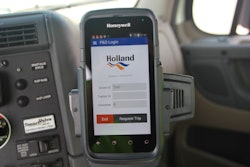
Everywhere you look, there is tremendous pressure for consumers to use the latest and greatest mobile technology devices. But this pressure extends beyond consumers. Enterprises in the supply chain, logistics, manufacturing and retail industries also are under pressure to upgrade to the latest mobile technology platforms to support data capture activities.
However, companies—that in many cases are still trying to update some of their legacy workflows to better support mobile technology on a basic level—might struggle with adopting the latest technology. The good news is that enterprises across different industries don’t necessarily need to use cutting-edge mobile data capture technology to start transforming and modernizing their business operations.
Just consider the performance of a three-year-old smartphone or tablet is still capable of delivering. They are relatively fast, can run modern operating systems and apps, have a good—or great—camera and screen, and can contain GPS and other sensors that make advanced tasks possible. Those are the foundational elements that enable mobile data capture activities like inventory management, order picking, track and trace, and proof of delivery. No matter how you look at it, a three-year-old mobile device is still a great enterprise solution.
Sure, your older mobile device may not have the newest bells and whistles, but you can still get a lot done. Modern apps can do a lot with something besides the newest mobile platform, because older platforms can still accomplish plenty in most cases. The truth is that some of the recent improvements in smartphone and tablet performance that have been aimed at consumers may not even provide direct benefits to the mobile data capture tasks that you need to do within your organization.
This means that companies experimenting with mobile data capture technology can save money and use devices that are one, two or three release cycles old without feeling like they’re living in the past.
Of course, whether you use older or newer smartphones and tablets, the life span and TCO (total cost of ownership) associated with traditional mobile devices can be two of the most convincing proof points that using mobile data capture technology in the supply chain, logistics, retail or manufacturing arena is a good business decision.














